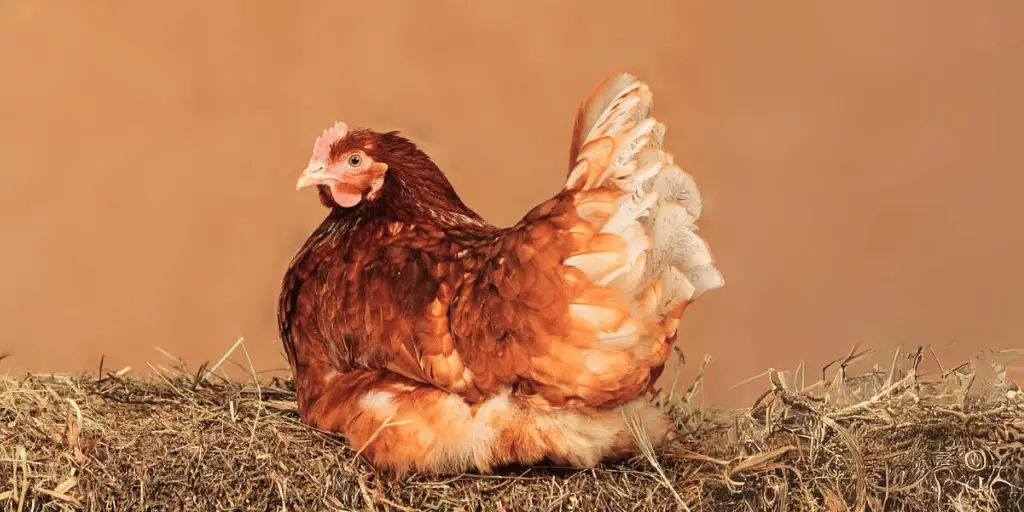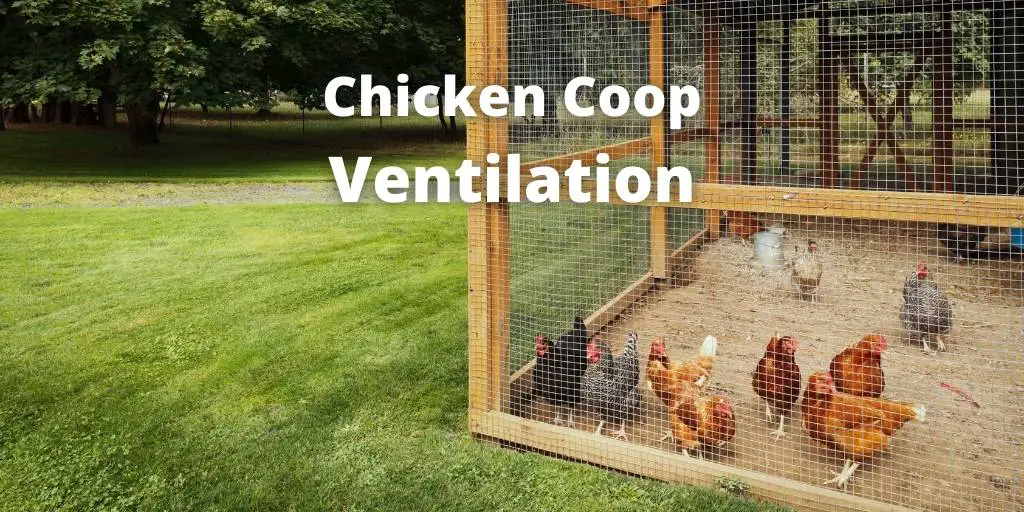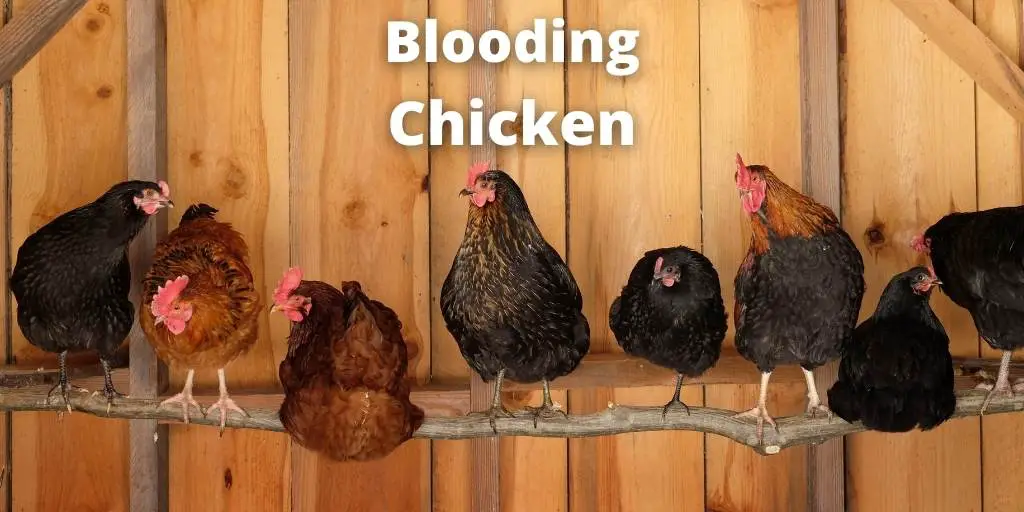Does your chicken have a pale chicken comb? If your chicken’s comb looks pale or faded, this may be something to worry about.
The chicken comb is a vital body part. It indicates the overall health and well-being of a chicken.
This fleshy part is rich in blood vessels and on the chicken’s head. That is why it is susceptible; chickens don’t like it if someone touches it.
It plays a crucial role in thermoregulation, attracts mating, and shows the chicken’s reproductive health.
Its color, size, and condition tell much about the bird’s health. It is primarily bright red in color but indicates a problem when it looks faded or pale in color.
A few chicken breeds are pure black with a black comb. You can also recognize the problem if the black comb looks faded or light gray.
In this guide, we have explained everything about the pale chicken comb. This will help you understand the signals from a pale chicken comb, the chicken’s internal state, and treatment and prevention measures.
Understanding the Role of Chicken Comb
The chicken comb on the top of the head is a crown-like structure that looks like a normal body part, like human ears. But it’s not true.
It has more than an ornamental use. The chicken comb is a critical organ involved in thermoregulation and indicates the reproductive health of the chickens.
Below are a few essential roles of the chicken comb:
Role in Health Monitoring
The chicken comb is an early warning system for identifying health issues in the flock. A healthy comb is usually bright and vibrant because of good blood flow.
The color of the chicken comb indicates the bird’s health condition. Changes in color, size, and texture indicate various types of health problems.
It may be dehydration, nutritional deficiencies, avian influenza, or parasitic infection. If it looks discolored, there may be anemia or a circulatory problem.
So, after that, you need to investigate further to discover the underlying health problem.
Helpful in Thermoregulation
Another vital function of the chicken comb is thermoregulation. Combs help regulate chickens’ body temperature.
Chickens do not sweat, so comb and wattles are essential in heat dissipation.
The chicken comb contains many blood vessels, which help release heat into the air and cool the chicken down.
This thermoregulatory function is vital in hot climate areas, which helps the chickens forage in hot weather.
Large feathers are more efficient at heat exchange, so large chickens can easily live in tropical regions.
Indicator of Reproductive Status
The chicken comb also tells the reproductive health and status of the flock. If the comb is bright red in hens, it primarily indicates fertility.
It is also a sign that pullets are ready to lay eggs. Combs become more vibrant and enlarged when hens mature sexually and begin egg production. At this age, combs have high blood flow because of hormonal changes.
A pale and shrunken chicken comb indicated that the hen was not laying or experiencing nutritional deficiencies.
On the other hand, a rooster comb indicates dominance and vitality. It shows their smarts and attractive looks. Moreover, it signals a higher position in the flock’s pecking order.
Now, we will discuss the causes of pale chicken combs in detail.
Causes of Pale Chicken Comb
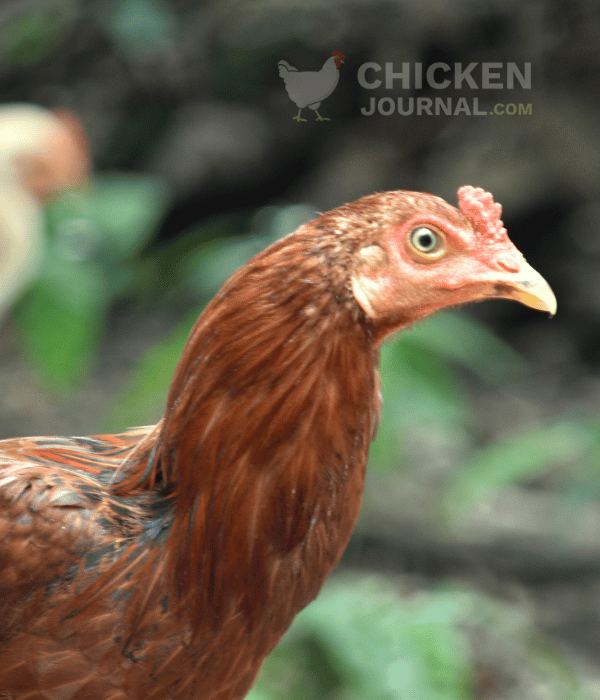
Below are a few common causes of pale chicken comb in chickens:
1. Nutritional Deficiencies
The most common cause of pale chicken comb is nutritional deficiencies. This is because nutrients maintain the blood and promote circulation.
The high number of blood vessels in the chicken comb has good circulation if the chicken is healthy.
Vitamin Deficiency
Vitamin A is helpful for eye, skin, and mucous membrane health. For the metabolism of energy and skin health, chickens need Vitamin B12. Vitamin E works as an antioxidant to protect against cell damage.
A lack of vitamins causes unhealthy blood vessels and circulation to the chicken’s comb, leading to a pale and faded comb.
Mineral Deficiency
Like vitamins, minerals are essential for chicken health. Iron is an essential component of hemoglobin generation in RBCs.
It directly impacts the color of the chicken comb. Hemoglobin carries oxygen in the blood, and its deficiency causes anemia. If a chicken has anemia, the chicken comb becomes pale or faded.
Protein Deficiency
Another problem is a protein deficiency. Protein is most important for tissue repair, growth, and feather development in chickens.
A protein deficiency in chickens’ bodies causes a lack of tissue regeneration in the comb. This leads to a pale appearance of the comb due to weakened cellular structures.
2. External Parasites and Internal Parasites:
External and internal parasites are a significant concern in backyard chickens. Chickens may become weak and die if they are not treated on time. These parasites suck their blood and make them weak.
External Parasites
External parasites, like mites, lice, and fleas, live on chicken bodies by feeding on their blood and skin. It causes anemia and, subsequently, a pale-colored comb.
These parasites not only suck blood from chicken’s bodies, but they also reduce their overall red blood cells. This causes irritation and stress in chickens.
Further, it may lead to problems like molting, skin infections, loss of appetite, nutritional deficiencies, and decreased immunity.
Use approved acaricides or insecticides to control external parasites in your chicken coop.
You may need to use these insecticides on the chicken’s body and near environments like the coop and run. You can add accepted insecticides in their dust bath areas.
Internal Parasites
Worms such as nematodes, cestodes, and protozoa, which live inside the digestive tract or organ, are internal parasites.
They mostly suck blood and nutrition inside the chicken’s intestine. This interferes with nutrition absorption and causes internal damage.
These internal damages lead to severe blood loss in the chicken’s body, causing the comb color to change to pale or light pink.
Follow the deworming procedures by asking your nearest vet. You can check out a few of the best dewormers in our detailed guide.
3. High Temperatures:
High temperatures can also cause pale-colored combs in chickens due to physiological mechanisms that affect body heat regulation.
Chickens do not have sweat glands, so they rely on other methods for cooling down, like panting and blood circulation to combs and wattles, which radiate heat.
When chickens are exposed to high temperatures, they send blood flow to combs and comb skin, dissipating heat more effectively.
This leads to chicken dehydration, and the comb color changes to pale.
4. Anemia or Injury:
Reduced red blood cells, crucial for supplying oxygen to blood cells, are a severe health issue resulting in anemia.
This happens due to many underlying diseases, including vitamin deficiency, parasitic infections, bleeding inside body organs, and more.
When it becomes chronic, you can see a pale chicken comb and fade patches on the comb.
Sometimes, it may occur because of internal or outer injuries. In that case, you must find the injured area immediately and treat it with a recommended wound-healing spray.
5. Molting:
Molting is a common problem in poultry and causes severe feather loss in chickens. During molting, most of the chicken’s body needs extra supplements.
Most of the vitamins and other nutrients were used for growing new feathers, which caused a lack of protein and nutrients.
This redirection of nutrition to the feather-growing process goes away from the other body functions, including comb nourishment, causing the chicken comb to be pale.
6. Egg Laying:
Sometimes, a pale comb is a common symptom of an egg-laying hen. Due to their physiological demands during the egg process, the hen combs become pale in color.
During the final stage of egg production, a small amount of blood is used for the development and nourishment of the reproductive organs of the hen.
This causes a little loss of blood in the laying hen’s body, which causes a pale and faded chicken comb.
Keep an eye on the egg-laying period and add good nutritional supplements to your chicken’s diet. This will keep their chicken comb bright red.
If your hen’s comb still becomes pale in color, don’t worry; it will return to normal color after the laying period.
7. Broodiness:
Another stressful time for hens is the brooding period, when the chicken comb becomes pale in color. During broodiness, hens have a strong instinct to hatch their eggs.
During that period, they sit on their eggs for long, whether they are fertile or not. They become less active and eat and drink less during brooding.
This causes changes in their physiological state and behavior, such as reduced blood, decreased activity, less nutritional intake, and stress.
These major factors lead to a heavy nutritional loss in their bodies, causing pale color comb.
8. Stress:
Stress and poultry farming are common problems that may occur for different reasons. Excessive stress leads to a lack of appetite, poor feathers, and an ugly appearance.
Chicken stress may be caused by egg laying, bullying, disease, injury, and many other reasons.
A chicken undergoing stress may redirect blood flow away from the skin and extremities. This also reduces the blood flow in the chicken comb, which appears pale in color.
Stress may cause nutrition deficiencies, which can lead to pale color comb.
9. Dehydration:
A pale comb is usually seen during summers in tropical regions. Extremely hot weather causes dehydration in the chicken’s body, which may cause a pale and faded comb.
Dehydration directly affects the volume and circulation of blood within chickens’ bodies. As we know, chicken combs are sensitive organs with many blood vessels.
When a chicken becomes dehydrated, the blood volume decreases, causing reduced circulation.
This leads to decreased blood flow to peripheral tissues, including their comb, causing a pale-colored comb.
During the summer, it is essential to use good electrolyte supplements.
Diagnosing Pale Comb in Chickens
Diagnosing a pale comb and taking immediate and appropriate steps to find the underlying cause is essential.
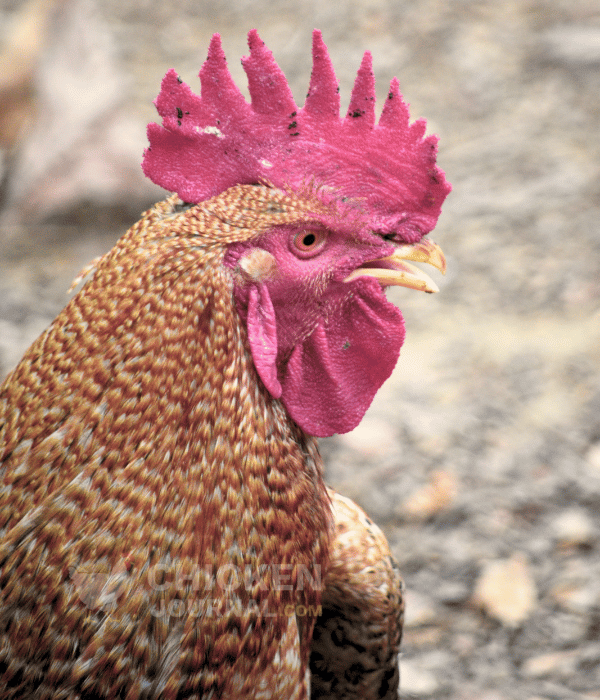
Here are a few common steps to follow when you notice a pale comb:
1. Keep Observing:
When you see the pale comb for the first time, observe for one to two days for any other signs and symptoms.
Understand their action and other symptoms like egg laying, changes in feeding and drinking, or an unhealthy poop type.
This helps you to understand the issue in the first line.
2. Isolate and Give Supportive Care:
If you see any unknown symptoms in a chicken, first isolate that bird in a separate, closed coop.
Give her feed, water, and nutrition until you speak with your veterinarian specialist. The chicken coop must be clean, separate from other coops, and comfortable.
Moreover, keep watching that chicken to see if there is any recovery or worsening health.
3. Consult a professional: After making the chicken comfortable, your priority is to consult a vet as soon as possible.
You can share pictures or videos in an online consultation for faster treatment. If your veterinarian care service is near your home, you can ask them to visit your farm.
Treatment Options For Pale Chicken Comb

You need to find the root cause to eliminate the pale chicken comb. Below are a few common treatments for pale combs.
Improvement in Nutritional Feed:
It is essential to provide chickens with a balanced diet at every stage of life. Whether chicks or adults, they need a balanced diet (pre-starter, starter, and large-size pellet/crumble).
Use a good brand of poultry feed that contains all the nutritional requirements, vitamins, minerals, and an adequate number of proteins.
You can provide additional vitamin and mineral supplements to fulfill their deficiencies, especially vitamins A, B2 (riboflavin), and E, which are crucial for maintaining a healthy comb color.
Allowing foraging in nature is another fantastic technique for providing chickens with a natural food source, such as insects and greens.
Treatment for Deworming:
If you find that the anemia and pale comb are related to the parasitic worm infestation in chickens, then deworming is required.
You can talk to your vet about the best dewormers suitable for your chickens.
Follow the instructions and provide them to your poultry flocks for safety and fast recovery.
Disease Management:
There is no direct treatment for viral infections except supportive care or advanced vaccinations. Viral infections like Avian Influenza and Newcastle Disease are deadly and kill approximately 80-90% of infected birds.
So, every chicken farmer must follow proper vaccination schedules for the safety of their flock.
Bacterial infections are another primary concern in chicken farming. If given in proper dosage, antibiotics can cure bacterial infections. Contact your nearest vet before giving any medicine to your chickens.
CRD, Coccidiosis, and E. coli are significant diseases that weaken chickens and cause pale-colored combs.
Reduce All Types of Stress:
All types of stress, whether cold, heat, or environmental, must be reduced. Provide good shade or a cold environment so chickens can forage comfortably in the backyard.
If your chickens live in hot climates, provide them ample shade and cool, fresh water during high temperatures.
If your chickens live in a freezing cold environment, provide them with a well-insulated space free from drafts.
You can also minimize changes in their flock environment and maintain discipline. Moreover, you should ensure they have an excellent space to gather food and drink water.
Summary
To keep chickens healthy, you must know about pale chicken combs to diagnose, treat, and prevent them. A chicken’s health is reflected in its comb.
We know that pale combs can indicate dietary deficiencies, parasite infestation, stress, environmental conditions, and diseases like Chicken Anemia Virus, Infectious Bronchitis, and Avian Influenza.
It is best to observe further signs, isolate the susceptible birds, and visit a veterinarian to avoid pale chicken comb.
Healthy feeding, parasite control, stress reduction, the proper breeding process, and vaccination are essential for keeping flocks active, healthy, and happy.
Caring for chickens proactively and focusing on prevention can improve flock health and happiness, which shows prevention is better than cure.
